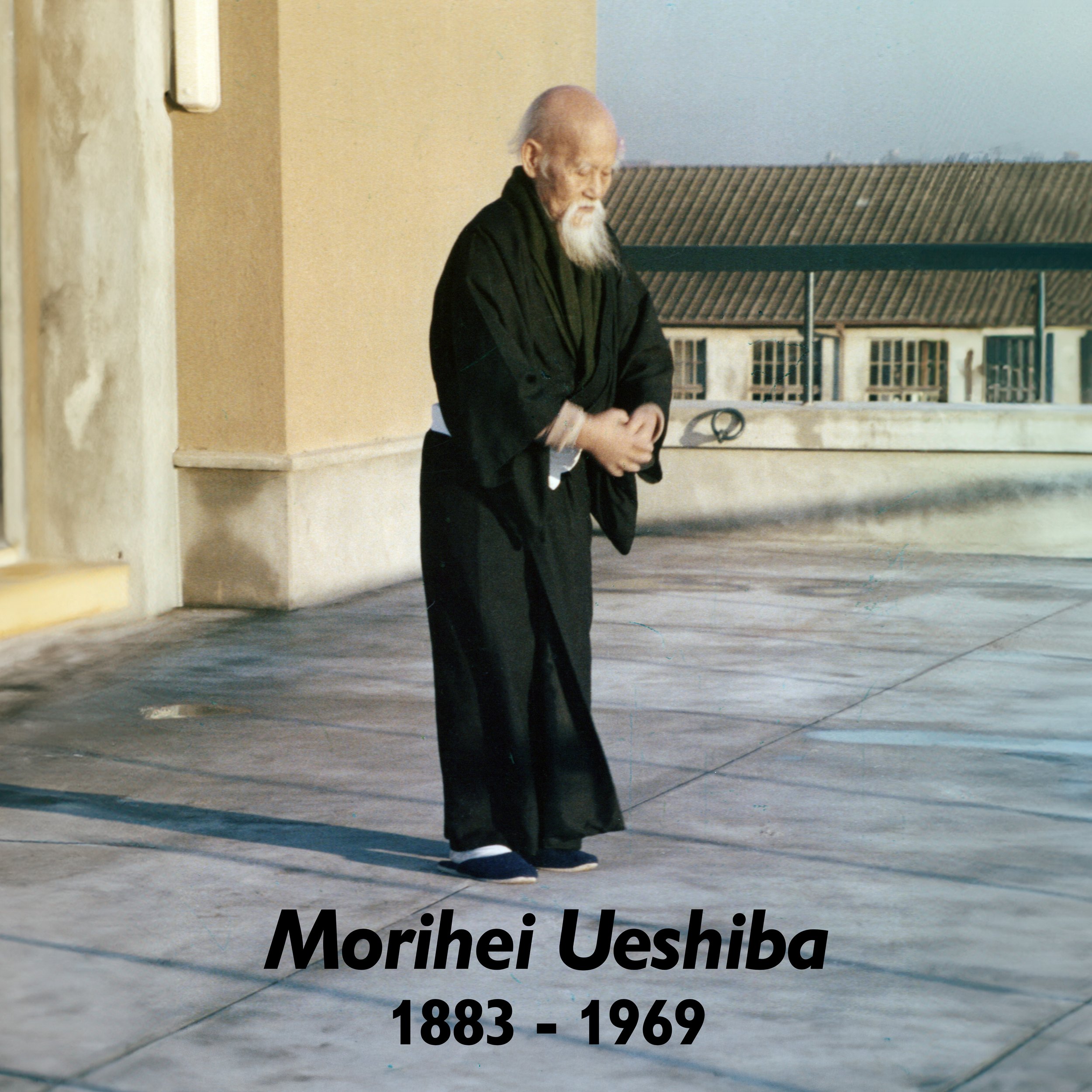Today is O’Sensei or Morihei Ueshiba’s meinichi (命日) or “anniversary of death.”O’Sensei is the founder of Aikido which he called “the Art of Peace” and created this idea that a martial art could teach us inner peace.
When we talk about peace, the uninitiated think about it in terms of wasen (和戦) or “war and peace.” Peace from this perspective is about violence and is defined as “a state or period in which there is no war or a war has ended.” Understanding O’Sensei’s philosophies, Aikidoist think about peace from its other definition meaning “freedom from disturbance; tranquility.”
This idea of peace might seem contradictory as Aikido is first and foremost a martial art and martial arts are about defeating others. However, Aikido is a highly evolved martial art. O’Sensei took the practices and techniques of Daito-ryu and transformed them into a tool that we could use to develop ourselves. Fighting or not fighting is not the point. Violence is something which arises from our inner state and intentionality. If we are calm, we cannot commit violence. This composure and non-violence is something that naturally evolves inside of us we train in Aikido. Through training, we realize is that if we are at peace, then there is no need for violence. However, if someone attacks us and we throw them down and they get hurt, that is just the outcome of their actions and the violence they experience was done to them by themselves. This is the understanding of violence, inner peace, and intentionality.
We attain inner peace through shugyo (修行) or Aikido as an ascetic practice. Furuya Sensei explained: “Shugyo means ‘training’ or ‘practice.’ Gyo is inspired from Buddhism meaning intense spiritual training. In ancient times, a warrior would go on a long journey called musha shugyo or ‘warrior training.’ This type of training was not only to develop their skill as a swordsman, but to develop them into a mature human being as they experienced the realities of life. Today, shugyo means regular physical practice taken to an intense level in order to transcend the body and reach a high state of spiritual awakening or awareness. My grandfather explained to me that shugyo was silent practice. To practice with whatever hardships or obstacles or disappointments that arise in the art and in life, without quitting or giving up, in silence, and without any complaints.”
The way we are supposed to approach our training and the achievement of inner peace is similar to what Sen Shoshitsu wrote in the book Tea Life, Tea Mind. “Tranquility is an aesthetic concept unique to Tea, comes with the constant practice of the first three principles of harmony, respect, and purity in our everyday lives. Sitting alone, away from the world, at one with the rhythms of nature, liberated from attachments to the material world and bodily comforts, purified and sensitive to the sacred essence of all that is around, a person making and drinking tea in contemplation approaches a sublime state of tranquility. But, strange to say, this tranquility will deepen even further when another person enters the microcosm of the tearoom and joins the host in contemplation over a bowl of tea. That we can find a lasting tranquility within our own selves in the company of others is the paradox.”
Similarly in Aikido, that we can be at peace even though someone is attacking us is the paradox. Aikido is way more than a means to destroy others - it is a way to achieve inner peace. O’Sensei may be gone but he’s not forgotten. He lives on as long as we remember him and as we assiduously practice the Art of Peace.
Today’s goal: Take a moment and remember O’Sensei and all that he brought to the world.
Watch this video of O'Sensei in 1961

